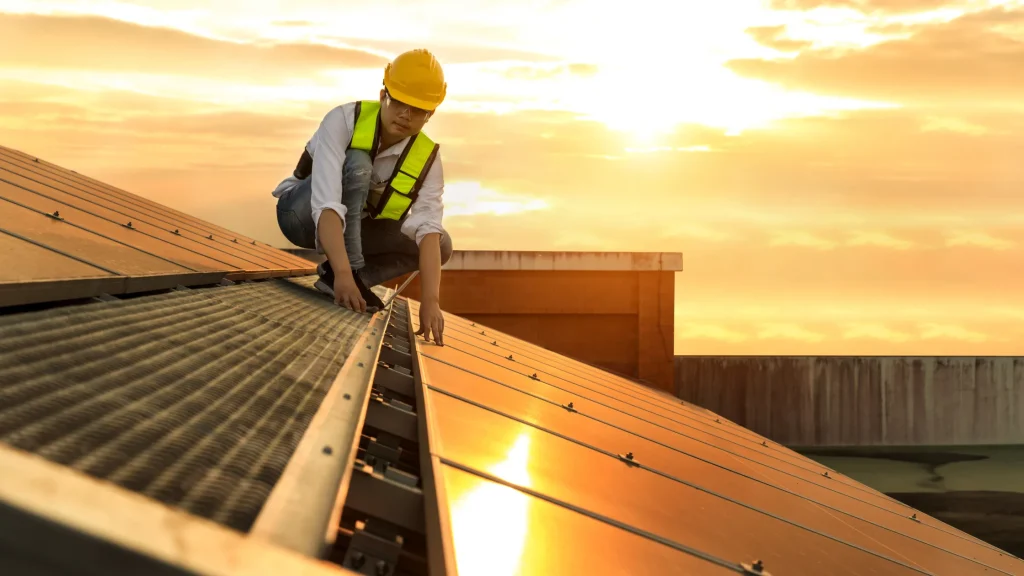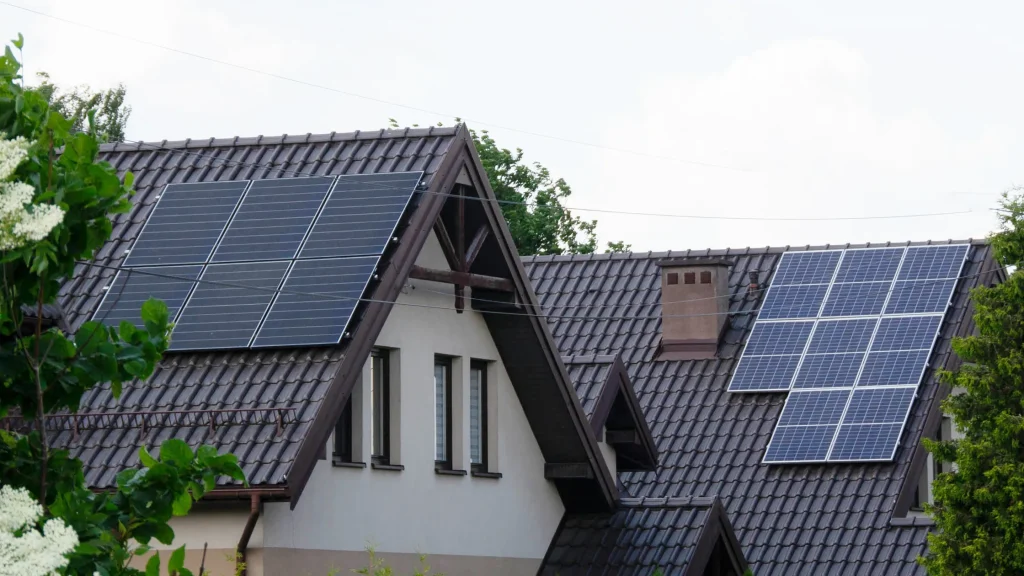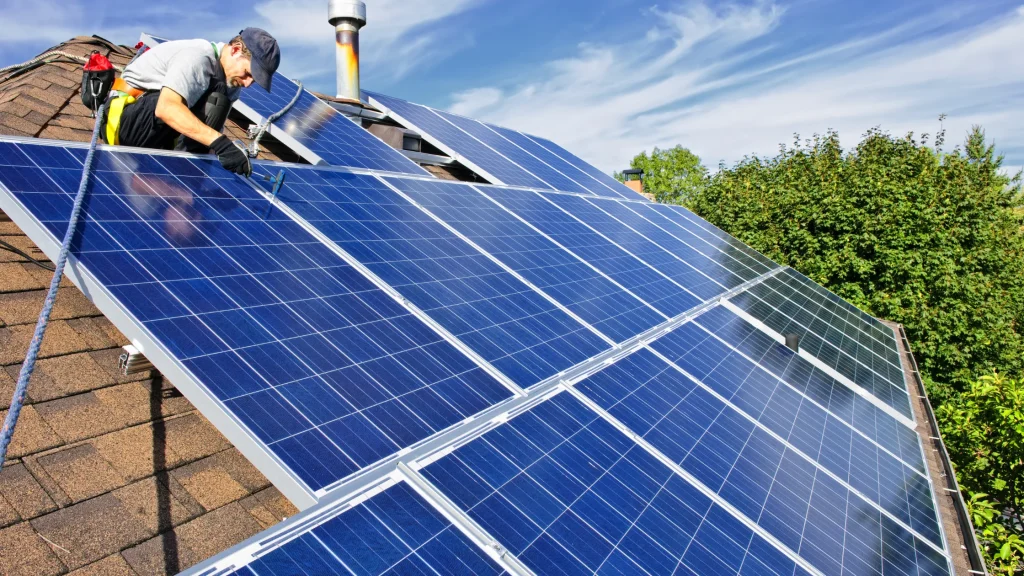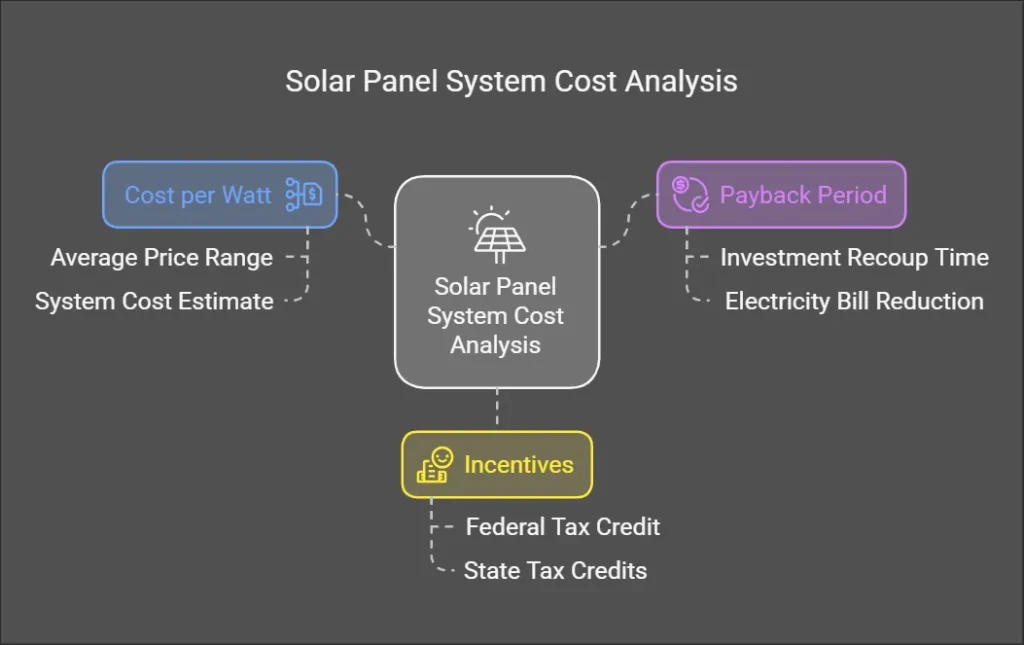Solar energy is now a popular way to power homes. It saves money and helps the environment. If you want to achieve 4.863 kW with a solar system, you might wonder how many solar panels you need. Everything will be explained simply in this guide. It will help you understand your solar panel needs.
Understanding Solar Panel Capacity and System Size

What Does 4.863 kW Mean?
A 4.863 kW system refers to the amount of power your solar panels can produce at their peak. To clarify, “kW” stands for kilowatts, a measure of control. But there’s more. Let’s understand the difference:
- kW: Measures the capacity of your solar panel system.
- kWh: Measures the amount of electricity produced over time. A 4.863 kW system at full capacity for five hours generates about 24.315 kWh of electricity daily.
This solar system size is ideal for many households, as it can cover most of their energy needs. It’s an excellent choice for families. It cuts electricity bills and helps the environment by using clean energy.
Solar Panel Efficiency and Capacity
Solar panel capacity and efficiency greatly affect how many panels are needed. More efficient panels convert sunlight to electricity better. This reduces the number of panels required. Solar panels come in different wattages, such as:
- 300W Panels: Standard choice for residential solar systems.
- 350W Panels: Slightly more efficient, requiring fewer panels.
- 400W Panels: High-efficiency panels, great for smaller roofs.
Higher-efficiency panels may cost more upfront. But they can save money in the long run. They reduce installation costs and take up less space.
Calculating the Number of Solar Panels Needed

The Formula for Determining Panel Count
You can calculate how many solar panels you need with a simple formula:
Number of panels = System size (kW) ÷ Panel wattage (kW)
Let’s use this formula to find out how many panels you need to achieve 4.863 kW:
- 300W Panels: 4.863 ÷ 0.3 = ~17 panels.
- 350W Panels: 4.863 ÷ 0.35 = ~14 panels.
- 400W Panels: 4.863 ÷ 0.4 = ~13 panels.
Since you can’t install part of a panel, you’ll need to round up. For instance, you’ll need 17 panels if you choose 300W panels or 13 for 400W panels. These are just estimates. They can vary by location and energy needs.
Factors That Influence the Number of Panels
Several factors can impact how many solar panels you need:
-
- Sunlight Availability: Areas with more sunlight require fewer panels. For example, sunny states like Arizona benefit from more peak sunlight hours than cloudier regions like Michigan.
- If your area receives less sunlight, you may need to increase the size of your system to generate enough electricity.
- Roof Space and Orientation: A south-facing roof in the Northern Hemisphere gets more sunlight. Proper orientation ensures maximum sunlight exposure.
- Shading from trees, chimneys, or nearby buildings can lower efficiency. Keeping panels in direct sunlight is crucial.
- Energy Needs: Your household’s monthly energy consumption, measured in kWh, will determine your desired system size. The average U.S. household uses about 900 kWh per month, making a 4.863 kW system suitable for covering a large portion of this energy.
Benefits of a 4.863 kW Solar System

Environmental and Financial Advantages
Switching to solar panels brings many benefits:
-
- Lower Electricity Bills: A 4.863 kW system can generate enough energy to reduce or eliminate your electricity bills, depending on your usage and sunlight.
- Clean Energy: Solar power is renewable and doesn’t produce harmful emissions, making it eco-friendly.
- Increased Home Value: Homes with solar panels are more attractive to buyers and often sell for higher prices.
Long-Term Benefits of Solar Energy
Solar panels are a long-term investment. Here are some additional benefits:
-
- Low Maintenance: Solar panels require minimal maintenance, mainly occasional cleaning and inspections. They can last 25 years or more with proper care.
- Energy Independence: Generating electricity reduces your reliance on the grid, especially during power outages or peak demand times.
- Sustainability: By using solar energy, you’re contributing to a cleaner planet for future generations.
Choosing the Right Solar Panels

Comparing Solar Panel Sizes and Efficiency
Not all panels are the same. Here’s a quick comparison:
-
- Monocrystalline Panels: These are the most efficient and take up less space. They are ideal for homes with limited roof area.
- Polycrystalline Panels: These are less expensive but slightly less efficient. They are a budget-friendly option for homes with more roof space.
Cost Analysis of a 4.863 kW System
The cost of a solar system depends on various factors:
-
- Cost per Watt: The average price ranges from $2.50 to $3.50 per watt. This means a 4.863 kW system may cost between $12,000 and $17,000.
- Payback Period: Most homeowners recoup their investment in 6 to 8 years, thanks to reduced electricity bills and government incentives.
- Incentives: Federal and state tax credits can significantly reduce the upfront cost of installing solar panels. For example, the Federal Solar Tax Credit offers a 30% rebate.
The Advantages of Choosing a 4.863 kW Solar System
A 4.863 kW solar system is a great way to reduce energy bills and help the environment. Choose the right solar panels. Then, consider your home’s energy needs. This will help you find out how many panels you need. Solar power is an investment. It saves money, boosts sustainability, and provides energy independence.
Consult a trusted installer if you’re ready to invest in solar energy. They can design the perfect system for your home. The future of clean energy is just a step away!
